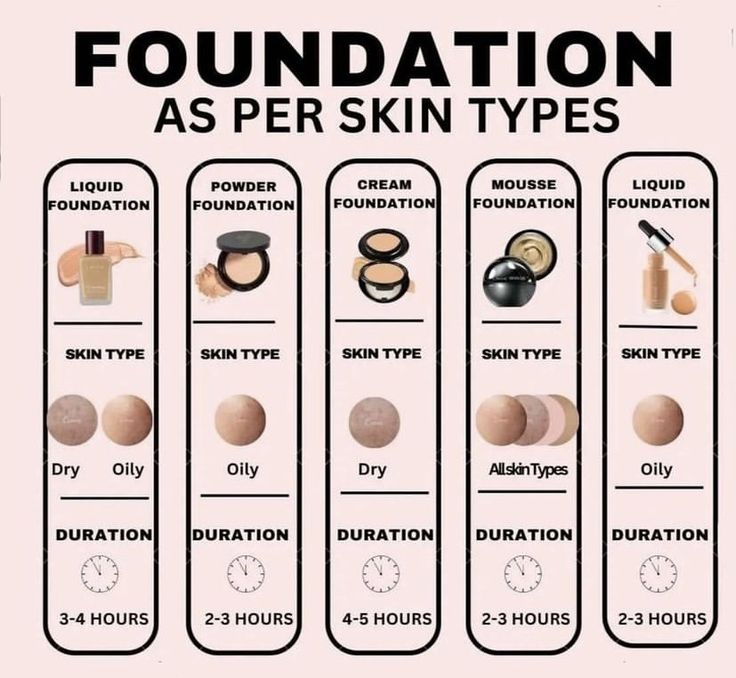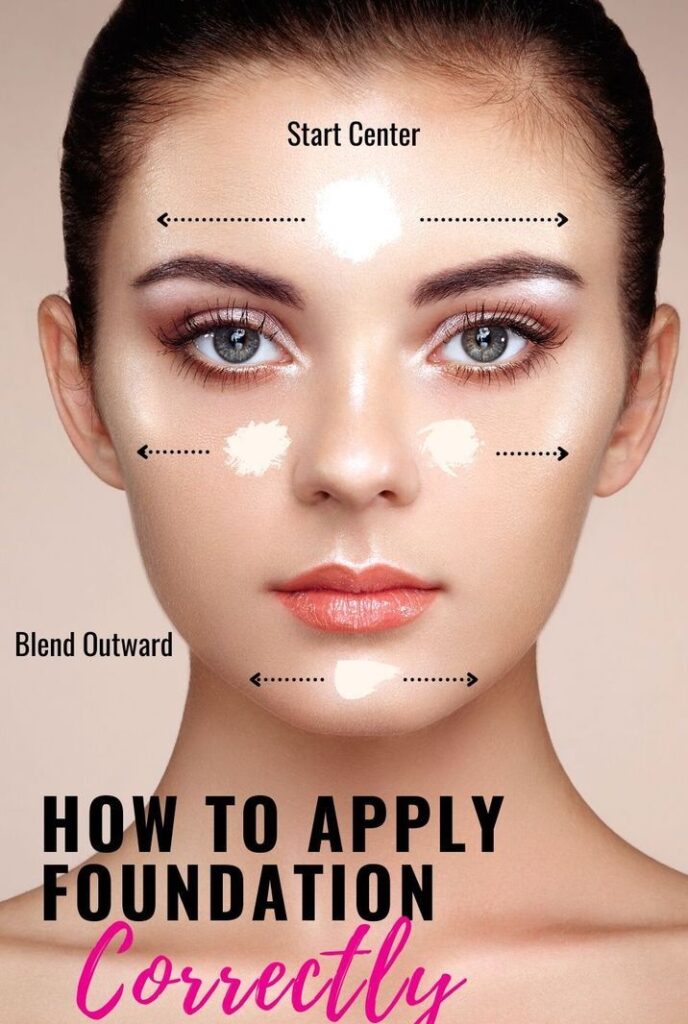1. Understanding Your Skin Type
The first step to selecting the right foundation is knowing your skin type. Is your skin oily, dry, combination, or sensitive? Each skin type has its own set of needs when it comes to makeup. Here’s how to match your foundation to your skin type:
- Oily Skin: If you have oily skin, look for an oil-free or mattifying foundation. These formulas help control shine and keep your face looking fresh throughout the day.
- Dry Skin: If your skin tends to be dry, opt for a hydrating foundation with a dewy finish. Foundations with moisturizing ingredients like hyaluronic acid will help to keep your skin looking healthy and glowing.
- Combination Skin: For combination skin, a balanced foundation formula that provides both hydration and oil control is key. Choose foundations with a satin finish for the best of both worlds.
- Sensitive Skin: If you have sensitive skin, look for foundations that are hypoallergenic, fragrance-free, and designed to minimize irritation. Mineral foundations are often a good choice for sensitive skin.
2. Foundation Coverage: Full vs. Light
Foundations come in a variety of coverage options. Understanding your desired look will help you decide between light, medium, or full coverage foundations:
- Light Coverage: These foundations provide a more natural, skin-like finish. They even out your complexion without masking your skin completely. If you prefer a no-makeup makeup look, go for light coverage.
- Medium Coverage: Medium coverage foundations are perfect for those who want a little more coverage but still want a natural, breathable finish. This type of foundation is great for everyday wear.
- Full Coverage: Full-coverage foundations are ideal for special occasions, photoshoots, or if you have concerns like acne, hyperpigmentation, or uneven skin tone. These foundations give a flawless finish and provide maximum coverage.
3. Choosing the Right Foundation Shade
One of the trickiest parts of finding the perfect foundation is choosing the right shade. To find your best match:
- Test on Your Jawline: Swatch a few shades along your jawline and check them in natural light to find the shade that blends seamlessly with your skin tone.
- Consider Undertones: Skin has different undertones: warm, cool, and neutral. Warm undertones have a yellow, peach, or golden hue, while cool undertones are more pink or blue. Neutral undertones are a mix of both. Identifying your undertone will help you choose a shade that complements your natural color.

4. Different Foundation Forms
There are several different forms of foundation, each offering unique benefits. Here’s a quick rundown:
- Liquid Foundation: One of the most popular and versatile types of foundation, liquid formulas are available in many finishes, from matte to dewy. They are easy to apply with a brush, sponge, or fingers and work well for most skin types.
- Powder Foundation: Ideal for oily skin or those looking for a quick and easy application, powder foundations provide a matte finish and are perfect for touch-ups throughout the day.
- Stick Foundation: Stick foundations are convenient and portable. They tend to have fuller coverage and are great for on-the-go applications.
- Cream Foundation: Offering a creamy, smooth texture, cream foundations are excellent for dry or mature skin as they provide extra hydration while offering medium to full coverage.

5. How to Apply Foundation Like a Pro
Applying foundation correctly is just as important as picking the right one. Here are a few tips to achieve a flawless application:
- Prep Your Skin: Always start with clean, moisturized skin. Apply a primer to create a smooth base and help your foundation last longer.
- Use the Right Tools: Whether you use a brush, sponge, or your fingers, make sure to blend your foundation well. A damp makeup sponge can help achieve a dewy finish, while a brush can give more coverage.
- Apply in Thin Layers: Start with a small amount of foundation and build up coverage if necessary. This will help avoid a cakey appearance.
- Set Your Foundation: To ensure your foundation stays in place all day, use a setting powder or setting spray to lock in your makeup.

